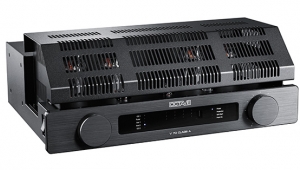| Columns Retired Columns & Blogs |
Nice looking and good measurements, though for the "grunt" your getting it's a bit exy for an amp that is a little weak on current drive into lower impedances. Over 550Wpc into 4ohms and lower 3rd harmonic would have been more impressive at that asking price.
(2ohm figures would most probably be sad)
"290Wpc into 8ohms, 470Wpc into 4ohms"
Cheers George










































